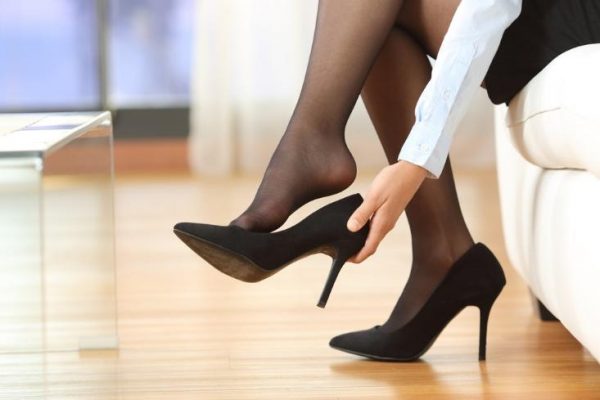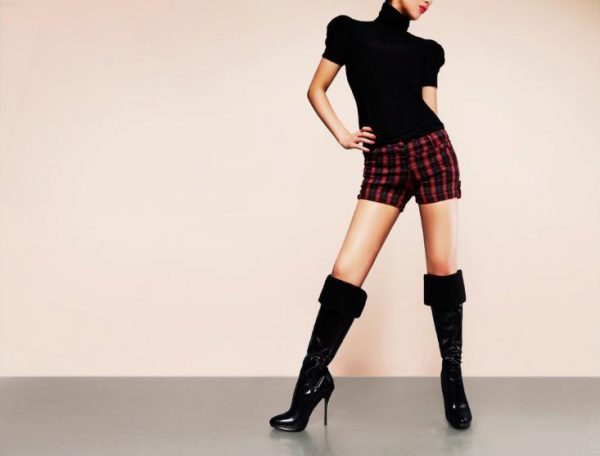Hands up ladies – how many of you have said that they can’t walk in heels? I know that I have, and I’ve heard the same thing from most of my friends, too. For some, walking in heels makes them feel like a cross between Bambi on ice and a monk walking over coals for the first time; in other words, heels can be awkward and they can hurt.
You only have to visit the nightclubs on a Saturday night to see just how many women find heels awkward. By kicking out time (2am – 3am in the morning), it’s not unheard of to see women walking around with McDonald’s bags on their feet – an ingenious invention, but perhaps not the most elegant of outfits!
At the same time, many women feel obliged to wear high heels. At work, on a date, out at the nightclub: it’s pretty much expected for us to wear heels, and many of us put up with the pain for hours at a time.

With the pressure to wear heels, they’re not going anywhere soon, and, as the received wisdom goes, we’ll just have to put up or shut up…but received wisdom isn’t always right; you can learn to walk in heels. Understanding how to wear heels in a painless, comfortable, and confident way is the key, and this is what I’m here to teach you.
Why Wear Heels? Are They Essential?
Of course, you have the option of not wearing heels at all, but as I’ve already explained, they’re expected in certain environments. Although, it is true that we are wearing fewer heels than ever before – and many choose instead to wear women’s flats boots or shoes – heels are part and parcel of everyday life and many of us choose to wear them regardless.
What Are the Health Risks Involved in Wearing Heels?
Market research has shown that the vast majority of women who wear flats would prefer to wear heels. Market research has also shown that women who do wear heels suffer a greater number of foot-related problems, such as short calf muscles and bunions.
In general, heels can cause a range of foot-related problems. There is an increased risk of minor problems, such as corns, calluses, and blisters. But the long-term prospects are worse and can lead to major problems, such as sprains, joint pain, and even damage to the spine and posture. In the end, heels can lead to an unsightly gait, which is effectively the opposite of the aim of wearing heels.
Our entire muscular-skeletal frame is finely tuned and involves a precise interplay of muscles, joints, cartilage, and bones. In short, we are supposed to walk in a particular way, and heels disrupt this in a significant way.
Is There a Way to Walk Safely when Wearing Heels?
Does all of this mean that we should throw out our heels once and for all? No, it does not. You can wear heels safely, but you need to understand how to do this properly. Below you will find some advice that will help you to walk in your heels in a way that protects you from the potential negative effects on your health:
Wear your heels on special occasions. Wearing heels from time-to-time, such as to an evening event or to a one-off corporate meeting, is fine. As long as you wear them for no longer than 8-hours at a time, you will minimise any ill effects.
Take your time when wearing heels – there’s no need to rush around. You need to take smaller, gentler, steps. The trick is to lay the heel down first, and then move smoothly from the heel to toe. This minimises the risks while maximising the benefits (e.g. a pleasant gait).
There are plenty of online tutorials to help you get this right, so take advantage of the huge resource that the internet is.
Make sure you buy well-fitted shoes. A huge proportion of women who wear heels are wearing the wrong sized footwear. Every time you buy a pair of heels, have your feet measured and make sure that the shoes fit correctly.
Use the metric or imperial measurements, rather than the manufacture’s listed shoe size, the latter of which are not standardised.
Rest and relax afterwards. Make sure that you look after your feet in the evening – give yourself a footbath or a foot massage.
Stick to a lower heel for day-to-day use. If you really want to wear heels every day, stick to a heel no higher than 3cm. Save your 5-inch women’s knee high boots for special occasions only.

Remember, that whilst high heels can cause many problems, flats are not always the solution. You need to ensure that the vast majority of the time you are wearing shoes that support the foot and decrease pressure on your joints. A good pair of shoes isn’t always the most elegant in the shop, but they will certainly help to protect your muscular-skeletal frame from long-term damage.
In conclusion: heels are a great addition to your wardrobe, but follow the rules outlined above in order to ensure that you maintain the health of your feet.






Leave a Reply